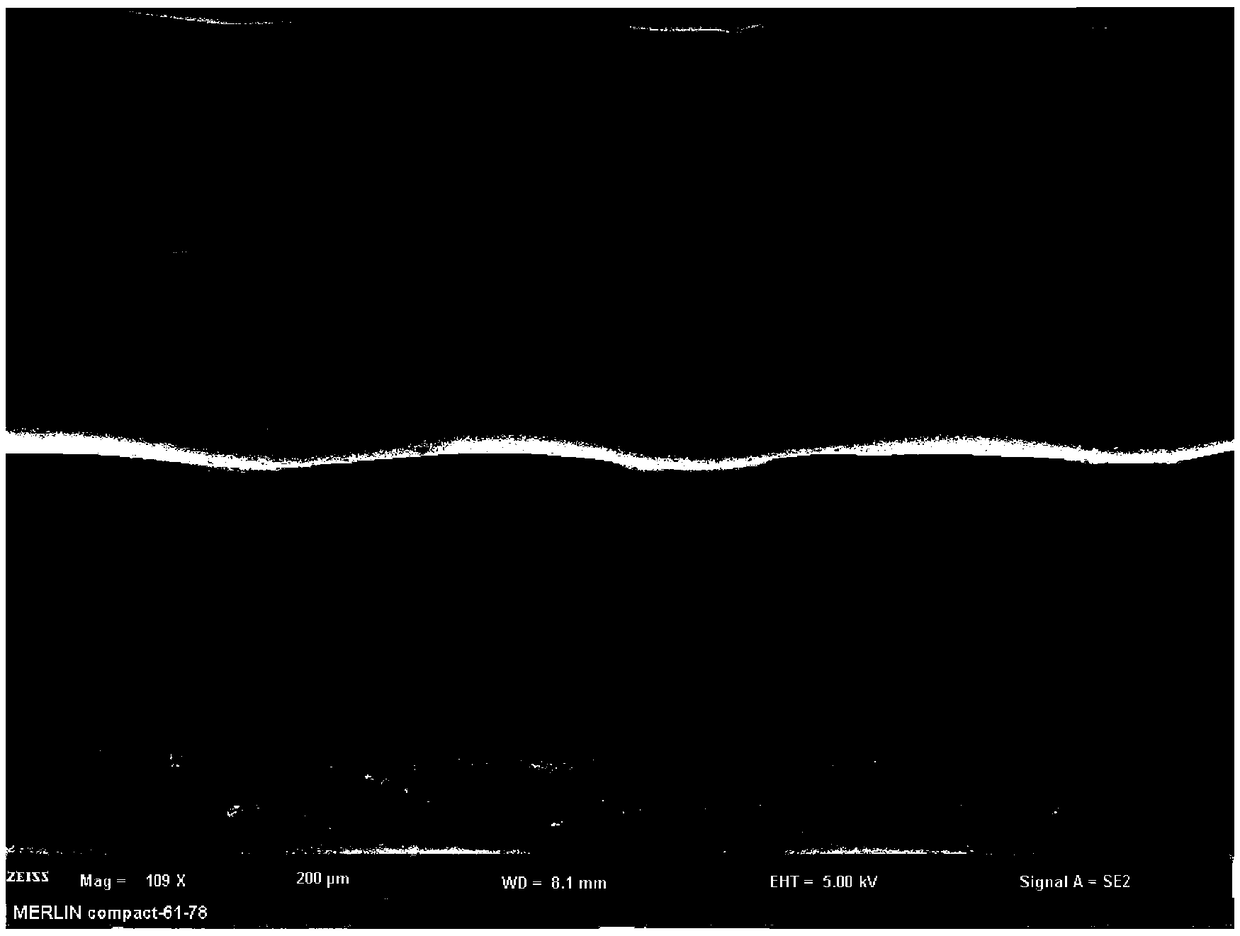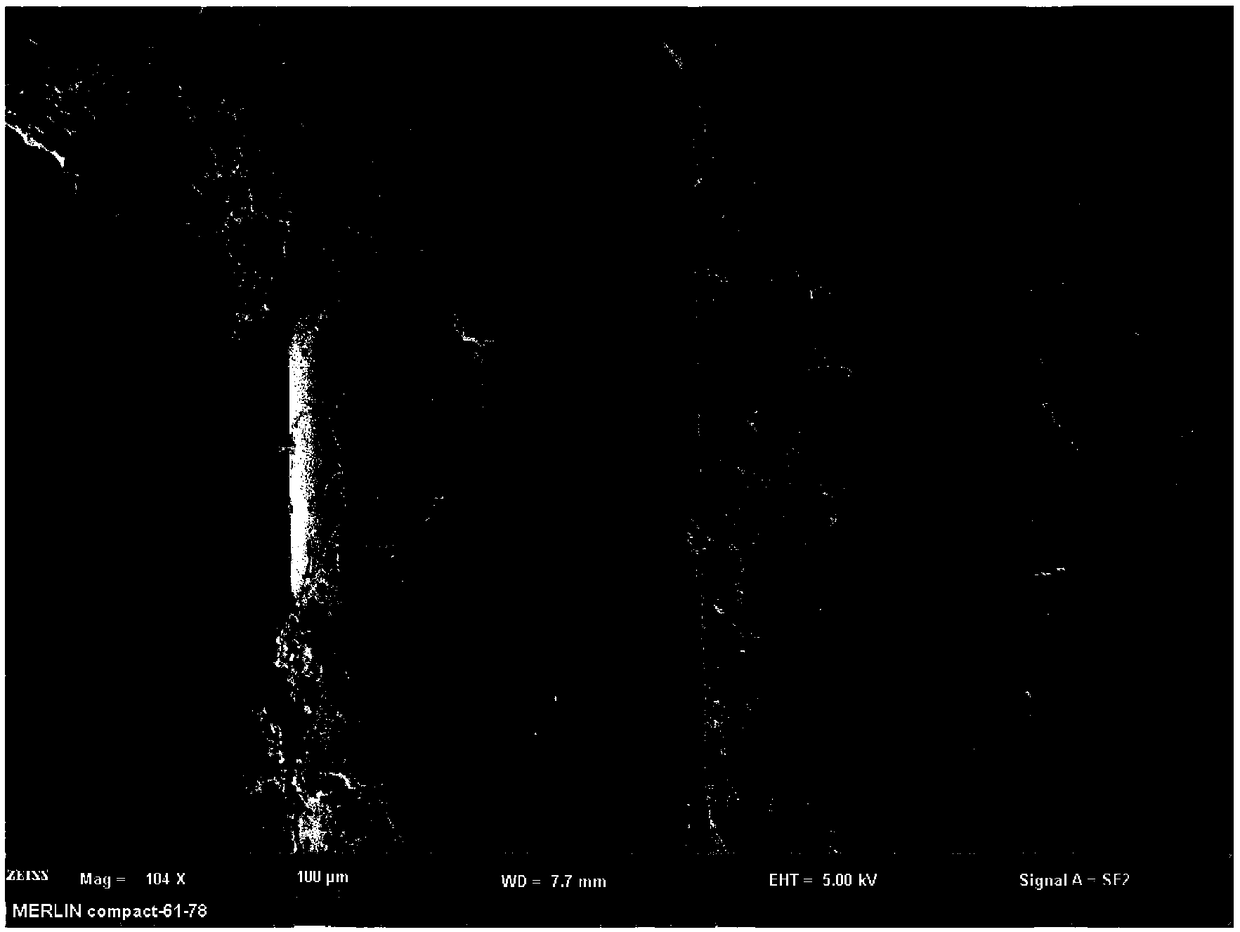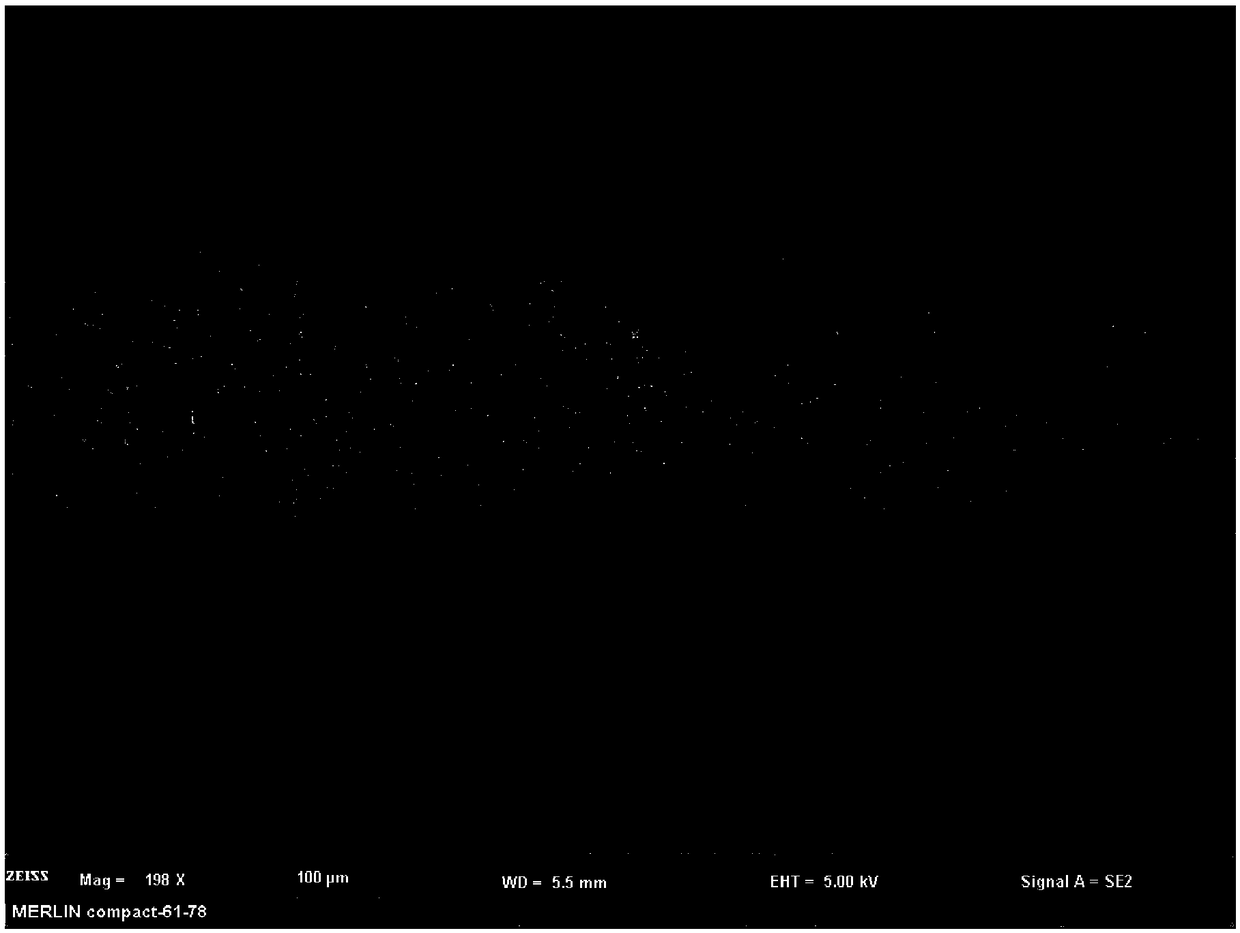Method for modifying nano-decalcification bone matrix particle coating layer by virtue of polycaprolactone-tricalcium phosphate bone tissue engineering scaffold
A technology of tissue engineering scaffold and decalcified bone matrix, which is applied in the fields of coating, tissue regeneration, and pharmaceutical formulations to achieve good plasticity, meet clinical needs, and have a wide range of sources
- Summary
- Abstract
- Description
- Claims
- Application Information
AI Technical Summary
Problems solved by technology
Method used
Image
Examples
Embodiment 1
[0053] A method for modifying a polycaprolactone-tricalcium phosphate bone tissue engineering scaffold with a nano-decalcified bone matrix particle coating, comprising the following steps:
[0054] 1. The allogeneic nano-decalcified bone matrix (DBM) material is mixed with 75% ethanol to dilute the nano-pulp
[0055] Mix the allogeneic nano-decalcified bone matrix (DBM) material (prepared in Example 3) with 75% ethanol at a volume ratio of 1:5, and oscillate sufficiently to evenly distribute the nano-DBM particles in the ethanol.
[0056] The mixing conditions are as follows: 20-25°C at room temperature, instrument: NHWY-100B tabletop constant temperature shaker, temperature control range is 5-60°C (30°C constant temperature), speed 40-300rmp, amplitude range Ф26mm, Changzhou Nuoji Instrument Co., Ltd. Company, the time is 5 minutes.
[0057] 2. Preliminary Freezing
[0058] Soak the PCL-TCP bone tissue engineering scaffold (20-25°C at room temperature, soak for 2 minutes) i...
Embodiment 2
[0069] A method for modifying a polycaprolactone-tricalcium phosphate bone tissue engineering scaffold with a nano-decalcified bone matrix particle coating, comprising the following steps:
[0070] 1. The allogeneic nano-decalcified bone matrix (DBM) material is mixed with 75% ethanol to dilute the nano-pulp
Embodiment 3
[0074] The preparation method of adult allograft nanometer decalcified bone matrix material comprises the following steps:
[0075] 1. The fresh adult allogeneic bone was removed from the soft tissue, and the modified Urist method was used to prepare massive nano-decalcified bone matrix (DBM) bone blocks
[0076] (1) Source of bone tissue
[0077] The allogeneic bone used for bone tissue decalcification comes from the femoral head, tibial plateau, and femoral condyle resected from patients undergoing hip and knee replacement in joint surgery from 2015 to 2016 in Changzheng Hospital Affiliated to Naval Military Medical University. Approved by the Medical Ethics Committee of Changzheng Hospital, it was approved to be used in clinical research. The selected donors all meet the following requirements of the American Tissue Bank Association: no history of acute and chronic infectious diseases; no history of exposure to toxic substances and drug abuse; no history of tumors, sexuall...
PUM
| Property | Measurement | Unit |
|---|---|---|
| particle diameter | aaaaa | aaaaa |
| particle diameter | aaaaa | aaaaa |
| diameter | aaaaa | aaaaa |
Abstract
Description
Claims
Application Information
 Login to View More
Login to View More - R&D
- Intellectual Property
- Life Sciences
- Materials
- Tech Scout
- Unparalleled Data Quality
- Higher Quality Content
- 60% Fewer Hallucinations
Browse by: Latest US Patents, China's latest patents, Technical Efficacy Thesaurus, Application Domain, Technology Topic, Popular Technical Reports.
© 2025 PatSnap. All rights reserved.Legal|Privacy policy|Modern Slavery Act Transparency Statement|Sitemap|About US| Contact US: help@patsnap.com



